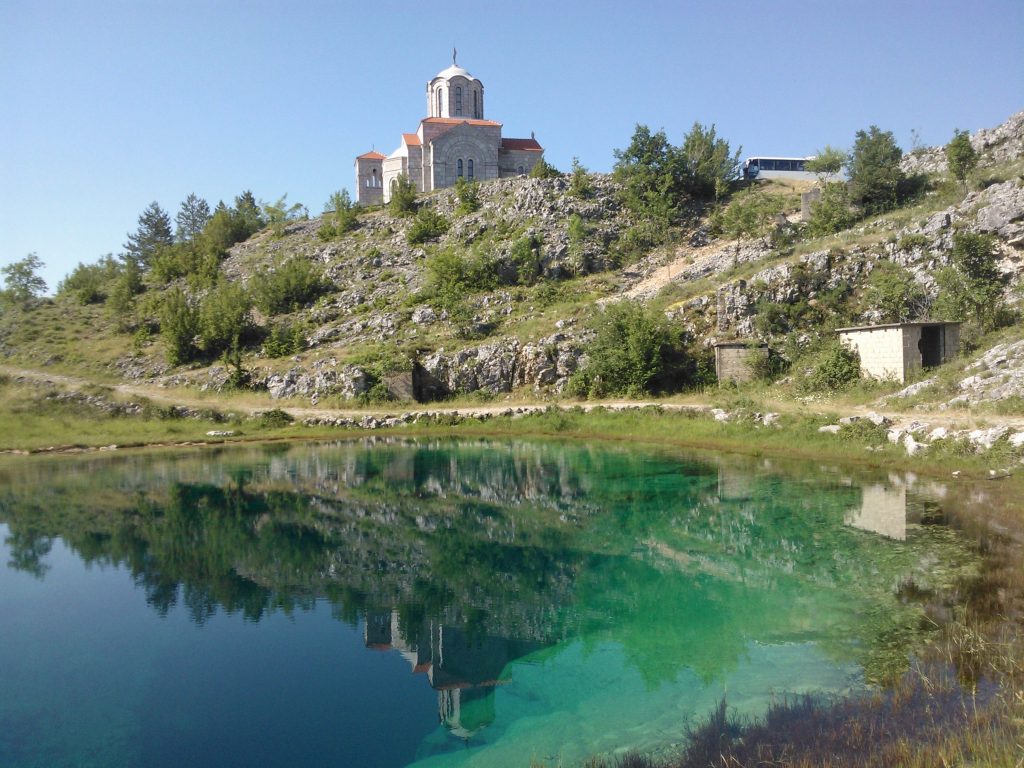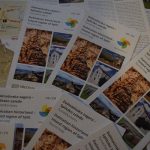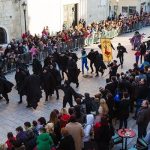After TCN’s article on the unique heritage of Imotski, the focus moves west on March 28, 2016 to the town of Sinj, a true champion of inland Dalmatia with its rich heritage and numerous traditions.
Sinj celebrated last year 300th Alka tournament anniversary. This world famous knights’ tournament, listed under UNESCO list of intangible heritage, was the main initiator of different cultural projects and events. This anniversary was a good opportunity to increase awareness about the Cetinska Krajina region. Additionally, in the last few years, Sinj hs done amazing work in developing different tourism products and services related to local historical and natural heritage. Thanks to its good location, beautiful nature, rich history and mild climate, the Cetinska Krajina has become the place for all sorts of active and cultural tourism. Every year, Sinj is developing more and more events related to local traditions and heritage. This article will try to recap all the valuable activities and traditions nurtured by locals.
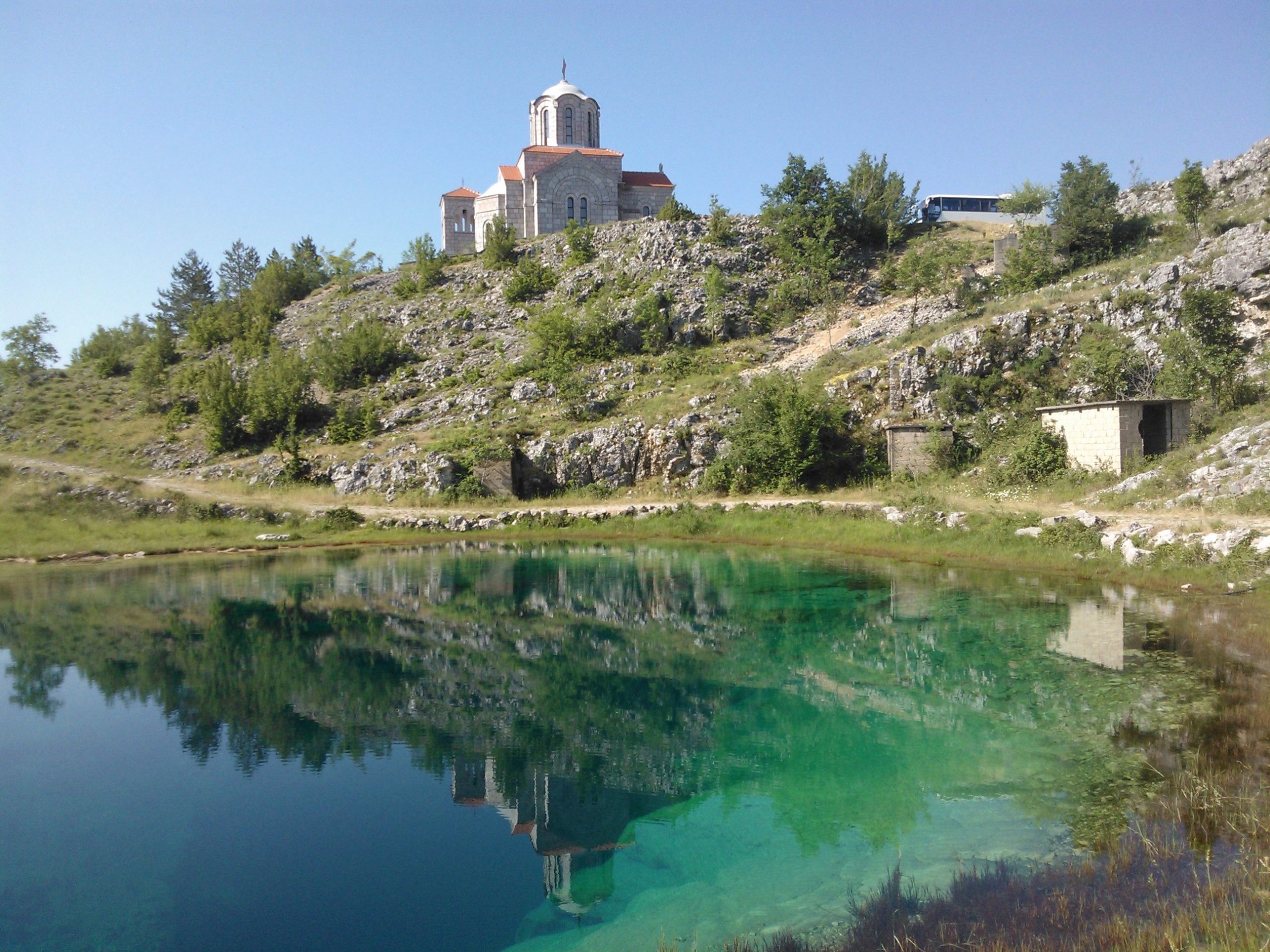
The lovely town of Sinj is located in the centre of the Dalmatian hinterland, surrounded by Sinjsko Polje Valley. Cetina River has its source here and the Cetinska Krajina region is surrounded by mountains Kamešnica, Svilaja and Dinara. The power of the river is used for the Peručko Lake reservoir as well as for the Peruča Hydropower Plant. Cetina River provides spring water for the Central Dalmatian islands while Sinj gets its water from Kosinac and Ruda spring. Cetinska Krajina is proud of its natural heritage such as the significant landscape of Sutina and Rumin, Kosinac and Miletin spring.
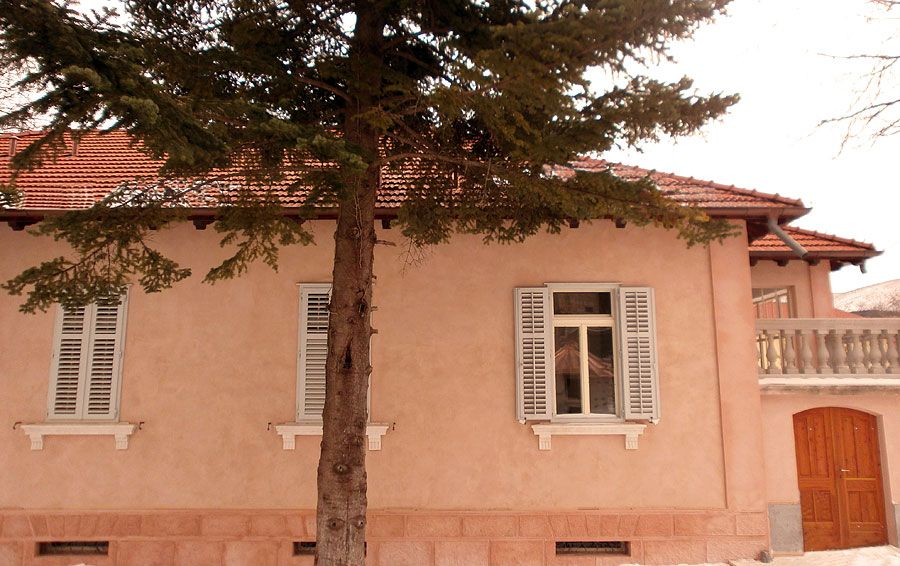
The founding of Sinj dates to the prehistoric times according to some findings of Cetina culture in the region. A good geographical position and climate were attractive to both Illyrian tribe Delmati and ancient Romans. During the age of the Croatian kingdom fortified Sinj was the centre of Cetina County. At the end of 15th century Sinj was constantly under Ottoman attacks and it fell under its empire at the beginning of the 16th century. It was under Ottoman rule untill the end of the 17th century when it was taken over by Venetians. Even then, Ottomans still wanted to conquer Sinj. This period of history was the time of the most important legend related to Sinj. The legend is connected to the battle for the town, fought in 1715, when 700 defenders of Sinj fought against tens of thousands of Ottomans. With the help of the Miraculous Madonna of Sinj, the people of Sinj successfully defeated the Ottoman army. In honour of this event, the Alka tournament has taken place every year since.
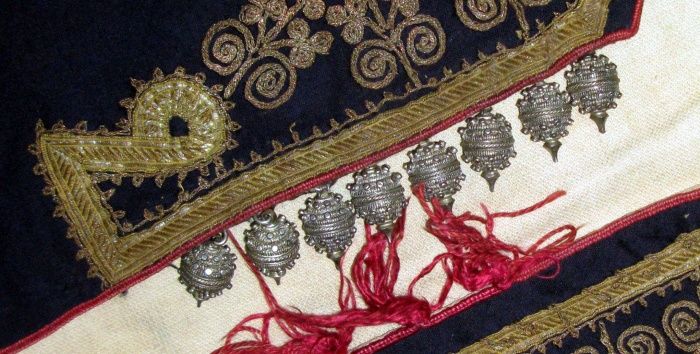
This UNESCO protected knights’ tournament dates to the times of a glorious victory over Ottoman Empire when the people of Sinj wanted to show their devotion and respect to the Miraculous Madonna of Sinj who helped the people of Sinj in their battle. This knights’ tournament is held each year on the first Sunday in August and has three different competitions during three days. First one is Bara, then Čoja and finally Alka. The main competition Alka, consists of a festive procession of Alka squires and their leader harambaša. The procession is followed by mace bearers, Turkish shield-bearer and edeks (horses) guides. The rest of the procession is reserved for Alkari knights and their commander alajčauš and the alkarski vojvoda (tournament master). The procession is followed by the Sinj brass band and a large audience from all over the world. In order to be an Alkar, there are several conditions that need to be fulfilled. Firstly, an Alkar needs to be born in Cetinska krajina and have ‘oko sokolovo i čvrsta desnica’ (hawk eye and strong hands). An Alkar needs to be honourable and honest man and it is a special honour to be part of the tournament for all local men. During 300 years of existence, this competition had several changes but the tournament still has the same importance in local peoples’ lives.
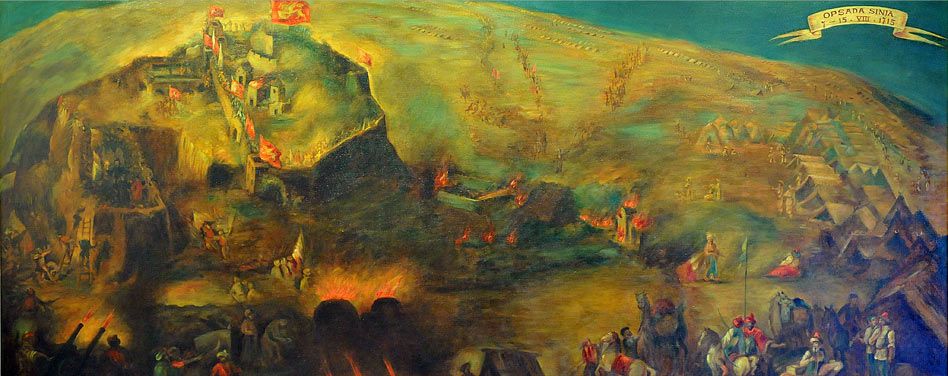
The tournament rules remained the same during the time and are described in the following text. An Alkar, in order to win, needs to aim at the alka (halqa, which in Turkish means ring and it presents the bottom from the saddle of a horse serascher-pasha Čelić who was trying to conquer Sinj). When they aim with the wooden lance they can either aim at the smallest, central circle (punat), or aim two lower fields or upper field. The Alka is aimed during full gallop and this requires yearlong preparations for the tournament. The winner is the one who gets the highest number of punats or points during course of three races. In the event they have a tied score, they play again in ‘pripetavanje’ until someone wins the tournament.
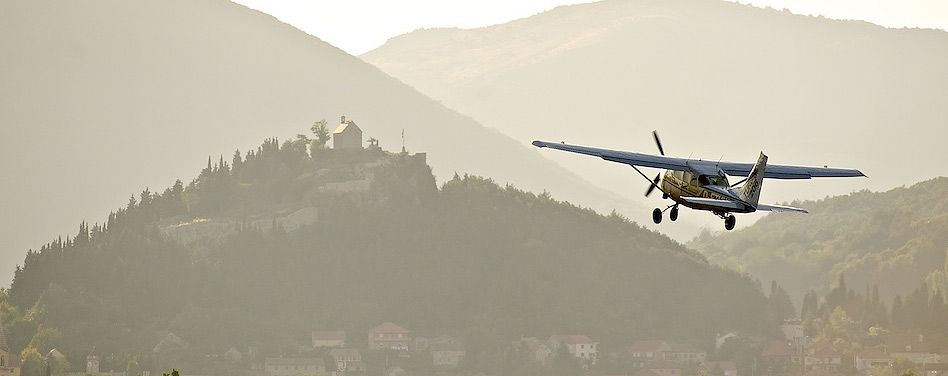
This unique tournament was first played in the times knight tournaments were popular throughout Europe. While all other tournaments disappeared during the course of time, Alka was preserved in Sinj and got world recognition as UNESCO protected heritage. Alka is also a symbol ofthe fight for freedom and peace, and it is the main example of reviving the history and heritage of Sinj. Watch the video on Alka rehearsals below.
Just a few days after the Alka tournament, another big celebration for Sinj takes place. Sinj, one of the Marian sanctuaries in Croatia, hosts the celebration of the Feast of Assumption and Day of the Town Sinj every August 15th. The day before the celebration (užežin), Sinj is already crowded with people, while on the day of celebration there is big procession in the town centre. The Image of Miraculous Madonna of Sinj is held usually by Alkari, Alkar squires and it is a great honour to be part of the procession. The Image, the work of an unknown artist, was brought from Rama at the times the people of Sinj went to find shelter from Ottomans. Except religious traditions this day is famous for the best party in town or locally called ‘dernek’. Most importantly, this is another great opportunity to taste local food.

Local traditions of Sinj wouldn’t be the same without ‘mačkule’ and the Old Town fortress. For every big event in Sinj, like Alka or Feast of Assumption, mačkule (cannon balls) are fired from the Old Town fortress and they are sign of greatness of the event which takes place that day.
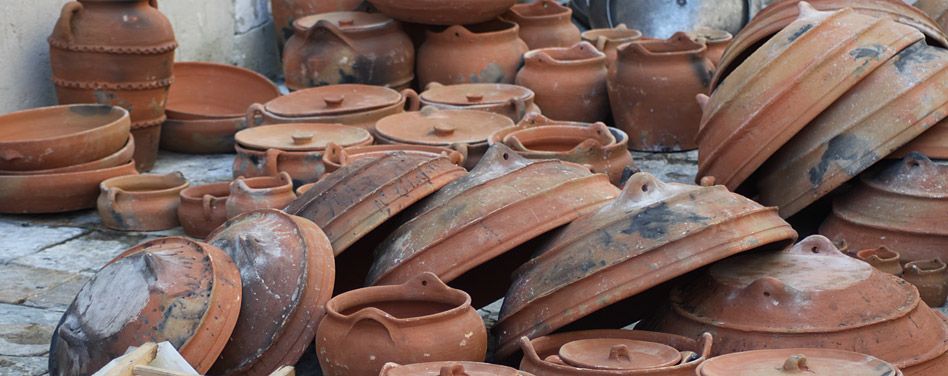
Sinj has plenty of significant buildings and houses which became part of recognisable cultural heritage. We have already mentioned the Old Town fortress with church and star-shaped Kamičak fortress. Both fortresses are in the process of restoration and conservation. Kamičak fortress is used every summer as a unique stage for classical music concerts and it should be used in future as apermanent summer concert stage.

Close to Kamičak, there is Alka knights’ court or kvartiri. It dates back to the 18th century and was used by different armies located in Sinj and as the Alka knights’ base.

Sinj in the 19th century had powerful local families who built themselves houses which are nowadays cultural heritage of Sinj. The most recognisable residential houses are Danek Villa and Tripalo Palace as well as Tripalo and Vjera Villa. All of them are unique and have cultural and architectural value even nowadays.
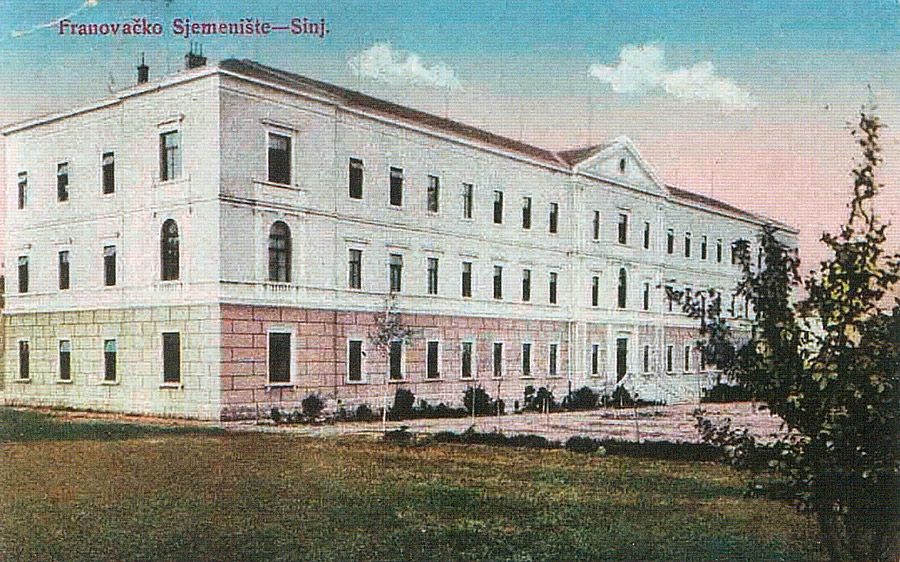
Sinj is proud of its historical relation with football too. The proof the football was played in Cetinska Krajina in Roman times, proven by FIFA, is a tombstone of a seven-year-old Roman boy Gaius Laberious who is holding a ball. To honour this, every summer, locals dress up as Romans and Illyrians and play football as it was presumably played before.
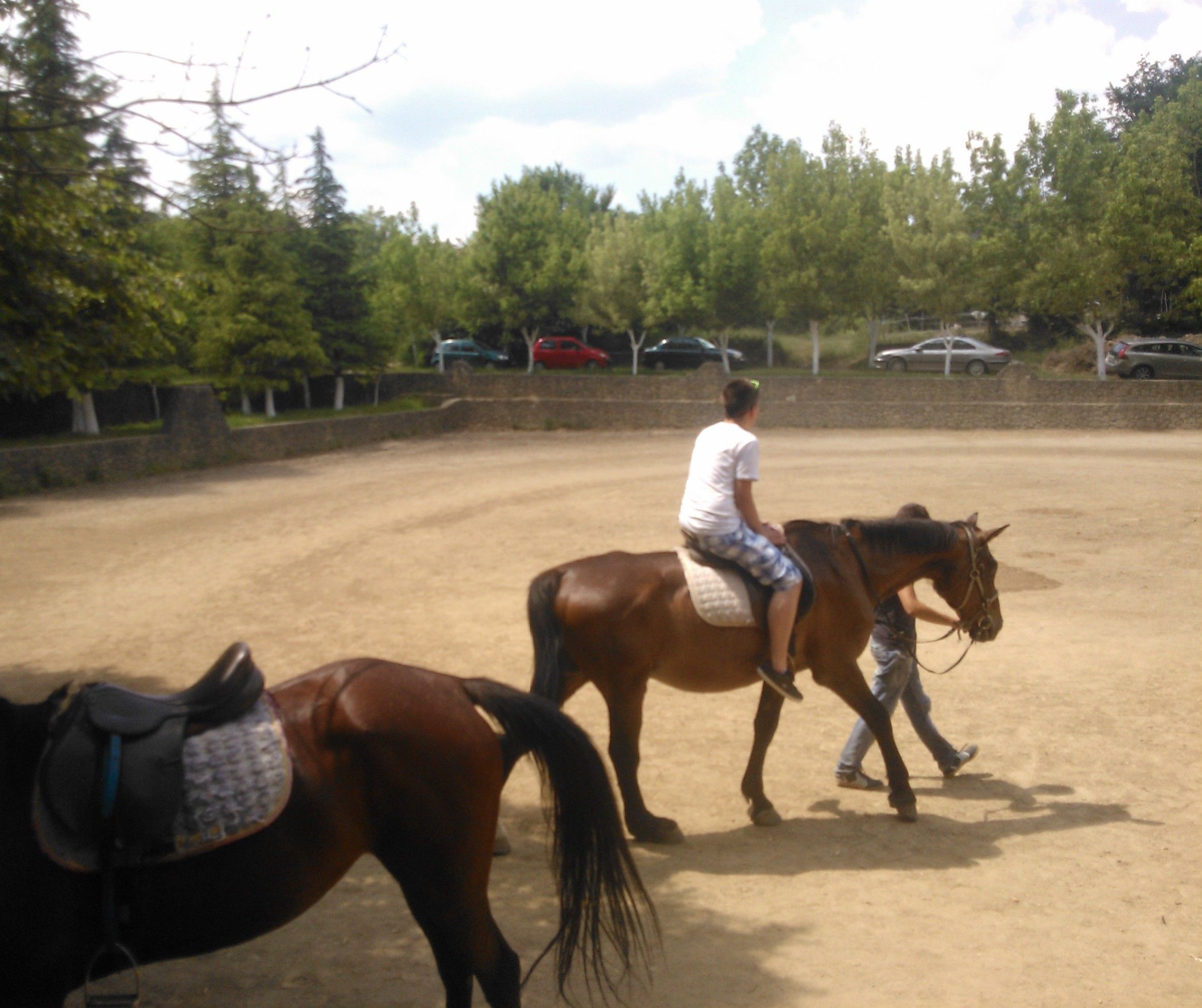
More recent heritage is presented in different artwork. The most notable is definitely the Alkar monument – it marks the beginning of Alka Tournament Course (Alkarsko trkalište) – the place where Alkari start to gallop. The statue is work of Stipe Sikirica who also made Battle of Sinj monument on the doors of Church of the Miraculous Madonna of Sinj. In addition to that, Sinj has specially built artwork – Stations of the Cross. It stretches all the way from the foothills to the church in the Old Town fortress.
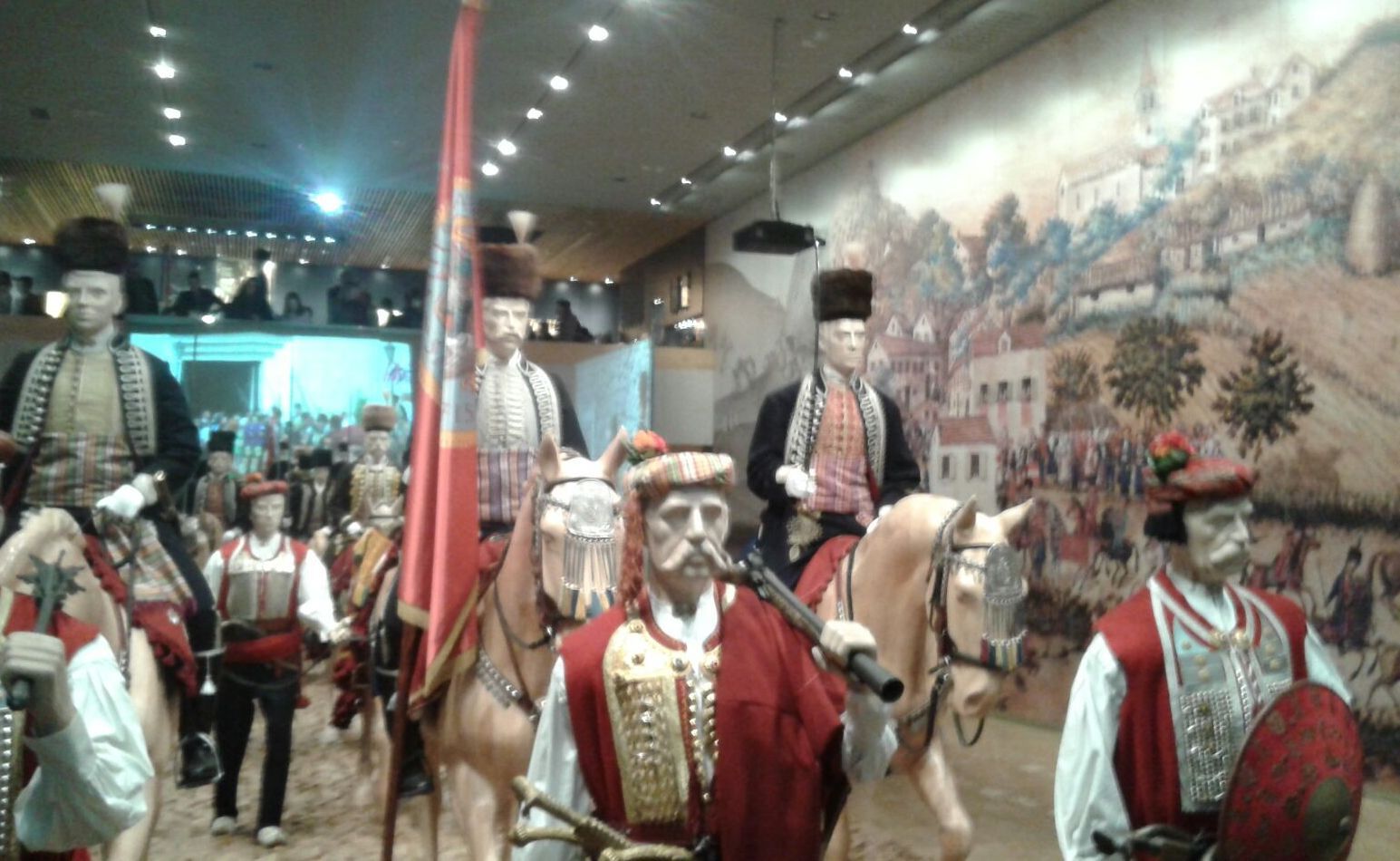
Sinj for a relatively small town has plenty of historical findings and heritage preserved in local museums. A definitive hit among museums is the newly opened Sinj Alka Museum which had 16.000 visitors from its opening in August 2015. Even thought they still don’t have their own website, the museum has a great interactive presentation of local history and the story of Alka tournament.
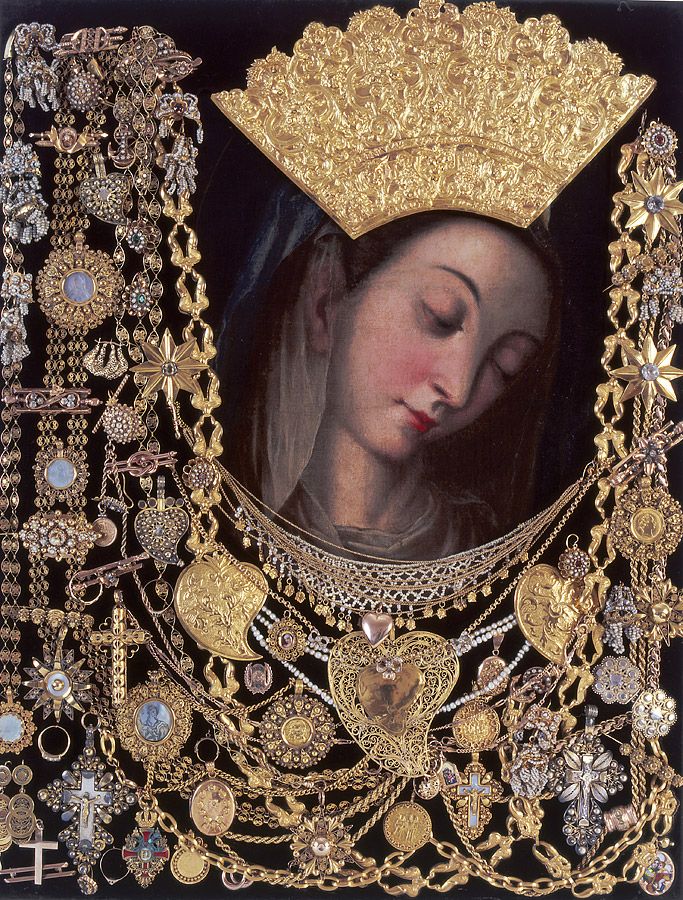
Another museum is the Museum of the Cetinska Krajina Region – Sinj. It is the central place for twelve different exhibitions which present cultural and historical heritage of the Cetinska Krajina. Recently they became part of potential project for revitalisation of culture and heritage. If the project goes well, the Museum will have more space for its exhibits and funds for permanent restoration & conservation workshop.
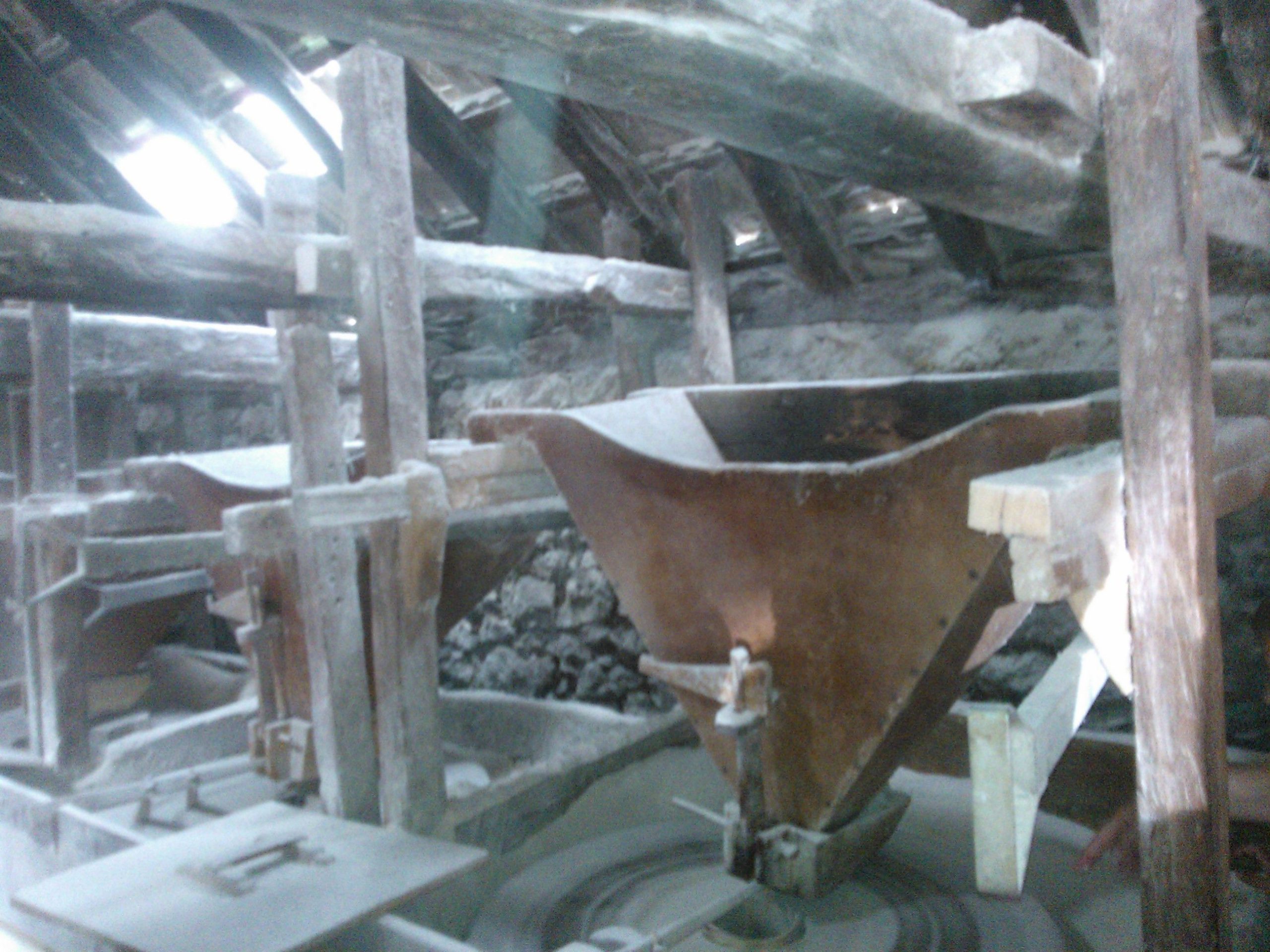
Another place to see is the Archaeological Collection of the Sinj Franciscan Monastery. It is considered to be one of the oldest in Croatia. It has findings from prehistoric and Roman times as well as the ethnographic collection with well-preserved folk costumes.
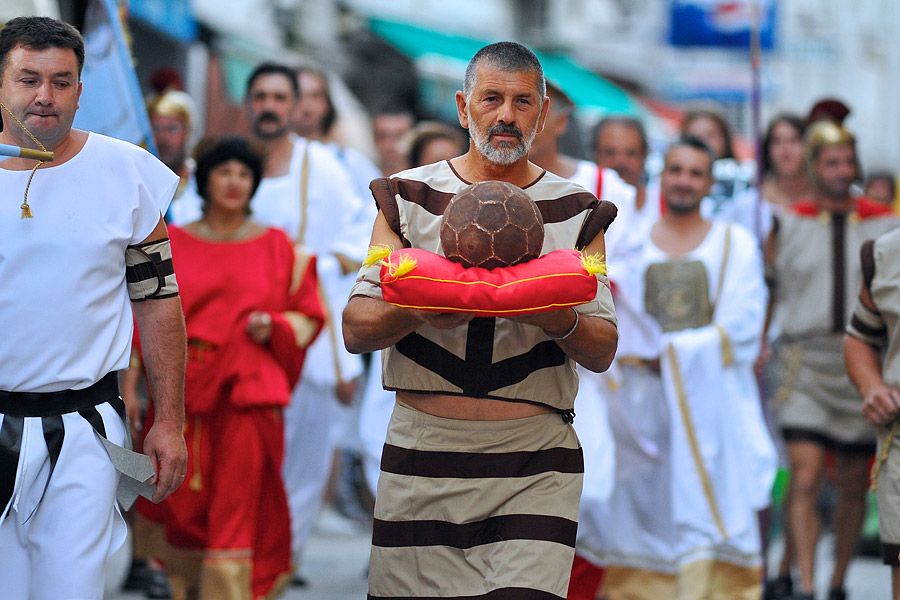
A valuable source for cultural and tradition keeping institution is Sikirica Gallery, located in the Alka Knights Court. This famous sculptor dedicated his work to Sinj and Cetinska Krajina. This Gallery is often the organiser of events such as concerts, lectures, workshops, exhibitions and gives support to the local community as well as to young unestablished artists.
When we talk about heritage of a region, the best way to keep year-long traditions is through local food and traditional dishes. Sinj is famous for its delicious food and gastronomic heritage which is in correlation with historical and cultural heritage.
Definitely the best known dish is arambaši and traditional pastries and sweets – uštipci and rafioli. Cetinska Krajina is proud of their delicacies like frogs and Cetina trout as well as with Dalmatian classics cheese and prosciutto. Prosciutto is additionally promoted in Sinj on at the recent Prosciutto fair as an authentic regional product with EU label of origin. For the most important town celebrations traditionally every family prepares excessive amounts of food based on the old recipes. People of Sinj were always known for their hospitality no matter what was their financial status and for the events like Alka each family is proud of their festive menu.
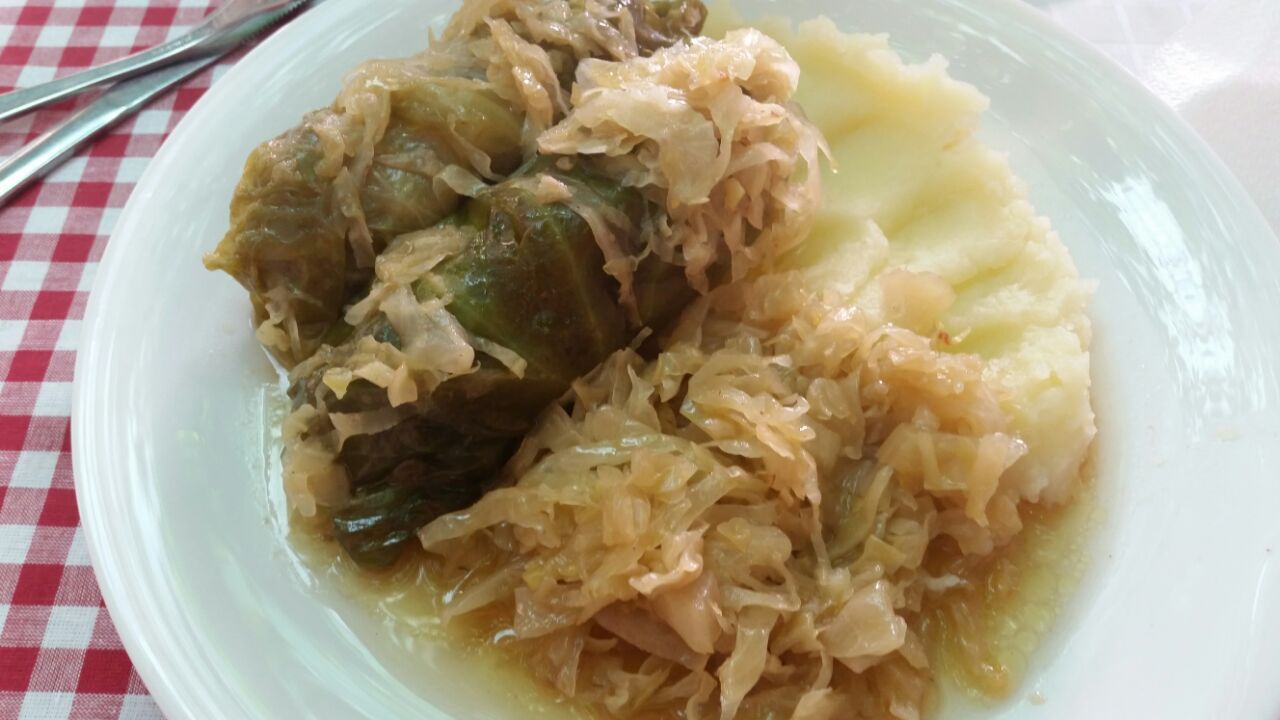
Alka tournament except food preparation includes a custom when the Alkar squire gives domestic pullets, cheese and prosciutto as a present to the Alkari. Food offered for the Alkar winner and the guests is usually prosciutto and cheese, meat soup, roasted lamb and/or pig, arambaši, stewed savoury crabmeat and assorted pastries accompanied by local wine (often a mix of white and red wine called hrvaština). For the Feast of the Assumption, the menu is similar – inevitable arambaši and roasted meat need to be on the menu. Arambaši are recently protected intangible cultural heritage and the name of the dish probably origins form Turkish word harambaša – in Alka the name for the leader of Alkar squires. Arambaši are filling dish made out of ground beef meat mixed with vegetables and wrapped in cabbage leaves.
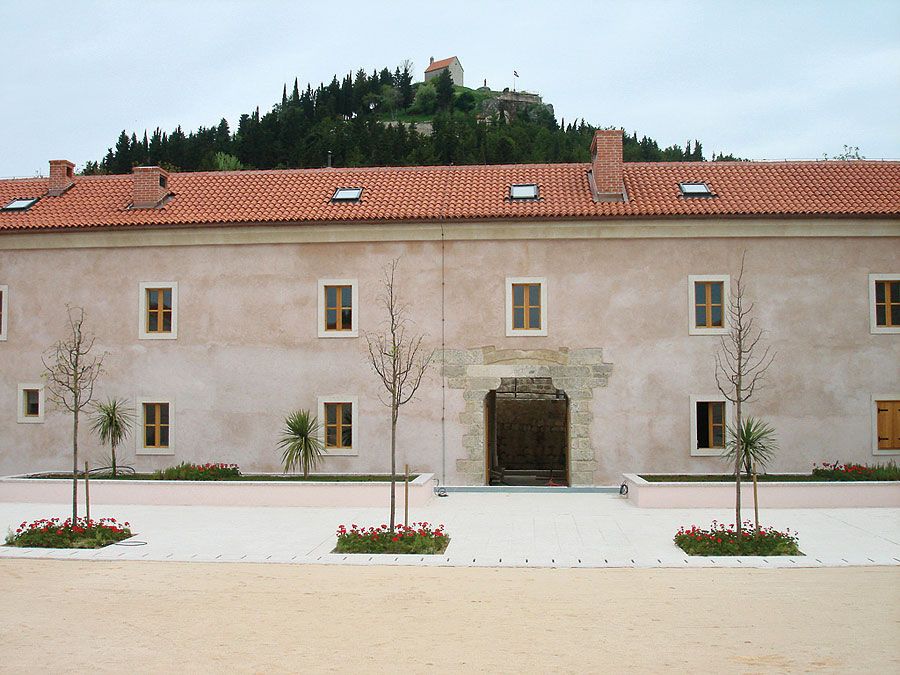
Cetinska Krajina is rich in storytelling heritage and various legends. The most famous one is definitely the one about Miraculous Madonna of Sinj and defeating the Turks. Apart from this legend, there are plenty of other local legends that are in tight connection with everyday life and superstitious beliefs. Apart from the legends, there are a lot of local customs and traditions which are usually related to different celebrations throughout the year. Interesting customs include the Carnival, when all the villages in Cetinska Krajina have different carnival processions– the most entertaining ones are from slopes of Kamešnica Mountain – popularly called “Didi s Kamešnice” from Gljev.
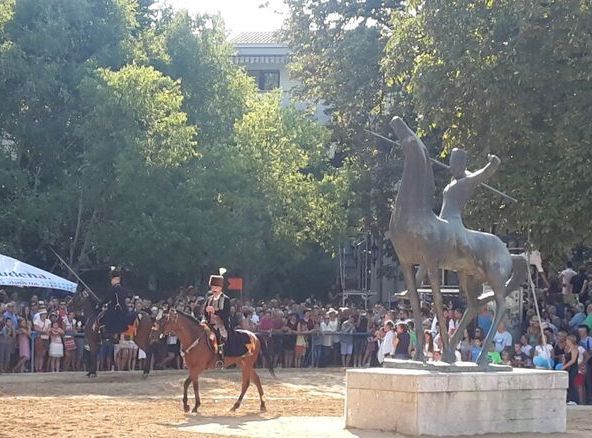
One of the notable local customs, which dates back to the 19th century, is the ritual of having a coffee on Sinjska Pijaca or so called Špica. Sinj is one of the towns in Croatia with the largest number of cafes per capita (some sources say there are 106 cafes in relation to 24.826 inhabitants).
Cetinska Krajina is well known for its traditional crafts. All the skills have been passed down from generation to generation. One of the most interesting crafts is for sure the making of tobacco pipes in a traditional manner in the village Zelovo. Apart from pipe making, the craftsmen of Zelovo are famous for making handmade and unique children toys with popular motifs like butterflies on sticks, planes, horses, acrobats, reeds and hammers.
The village of Potravlje is famous for making different objects out of clay, including bakre (clay pot), peke (clay bell) and different food containers. Potravlje is well known for its traditional hand-wheel pottery. In the last few years, the Tourist Board of Sinj has organised educational pottery workshops in order to keep this tradition alive.
https://www.youtube.com/watch?v=/gSVxHTm7feM
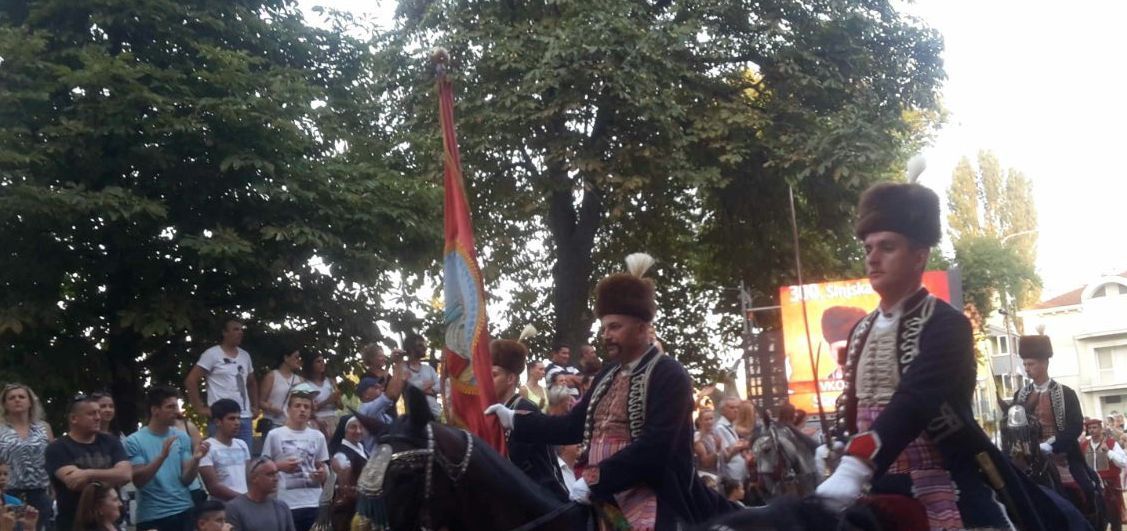
Other villages of Cetinska Krajina like Gljev and Gala are well known for craft of making opanci (traditional footwear), some villages are proud of their blacksmiths, while the village of Otok is known for Cetina boat making. The boat was important in everyday life through history as the main means of transport on the river Cetina. All these products were sold on local derneci and on fairs all over Croatia. Nowadays we can still see them being sold on fairs, but unfortunately there are less and less people interested in craft making. Most of the old crafts are listed under intangible cultural heritage of Croatia and the efforts in keeping them alive can be seen in different events like Rural products fair, races on Cetina boat, Žabarijada (frog-jumping contest) and traditional fishing with Cetina boat.
Among all the still living traditions, a special place is reserved for the traditions related to music and dance in Cetinska Krajina.

The traditional dance of Cetinska Krajina is a Silent circle or Nijemo kolo – it is performed as a closed circle and sometimes accompanied by UNESCO protected ojkanje singling and occasionally with rera, ganga or diple. Sinj and Cetinska Krajina standardised all the movements in dance while some villages kept their traditional way of dancing and people use this as a sign to determine who is from which village. It is performed even today on different fairs, derneci, weddings, folklore festivals and local festivities and celebrations. This unique dance is part of UNESCO Intangible Cultural Heritage.
All the singing traditions in Dalmatian inland like ojkanje, ganga and rera are well kept and saved from oblivion. UNESCO protected, Ojkanje two-part singling and rera (has lead singer followed by others) use voice-shaking techniques from the throat or ‘iz grla’. This singing is the traditional way of expressing opinions; describing events and mocking other people’s behaviour. Some examples of rera and ojkanje from Sinj and Cetinska Krajina can be found on Ganga.hr.
All the stated heritage and traditions are revived and kept thanks to locals who work hard to keep these traditions from oblivion. Individuals like craft-making families and different agricultural estate owners take part in this process. In addition, different organisations, associations and cultural centres have organised efforts in reviving the traditions and combining them with tourism.
Places to enjoy both nature and traditional food are definitely agricultural estates such as Panj, Mustang, Podastrana and Grab. The little village Grab is the place with the oldest continuously working mills in Croatia, which date back to 14th century. The mills are even more famous for their eccentric owner – Iko Samardžić who is known as a local poet and sculptor too.
Sinj has a long equestrian history and it has five equestrian clubs thanks to its Alka tradition. In addition, Sinj is proud of all sorts of active sports such as skydiving, paragliding, paintball, canoe safari, mountain climbing, cycling and many other sports. Sinj is part of the MedPaths project which has the goal to promote the region and adjust different hiking, equestrian and cycling paths throughout inland Dalmatian. Active tourism representatives, especially cycling associations are proud of events like Cetina Adventure which combine both nature and local traditions in order to make this region even more interesting.
The efforts for reviving the traditions go to all the cultural projects and centres like Alka Museum, Archaeological Collection of the Franciscian Monastery, Sikirica Gallery, Museum of the Cetinska Krajina – Sinj and media projects like Ferata newspapers and association SKUP. Furthermore, Viteško Alkarsko Društvo (VAD – Alka Knights society) is the main representative for keeping the Alka tournament tradition alive for more than 300 years. They also have a well-presented beginners guide to Alka on their Alka Wiki.
Special mention in reviving all these traditions must go to the Tourist Board of Sinj, which is doing a great job in constantly promoting Sinj and Cetinska Krajina. The tourist board at the same time a valuable source of information about this region. Thanks to their hospitality and well organised website, they were a great source of information for this article too.
Finally, after presenting the most interesting traditions, heritage and activities of Sinj, the only thing left is to go there and start exploring. A good starting point can be visiting Sinj Alka Museum and attending Alka Tournament this summer to see why people of Sinj are devoted to this special tradition for more than 300 years.
All photos courtesy of Tourist Board Sinj, Muzej Cetinske Krajine, private photos collection. Videos courtesy of Tourist Board Sinj.
Source: Tourist Board Sinj, Grad Sinj, Museum of the Cetinska Krajina, Alka.hr, Ganga.hr, EU-MedPaths

